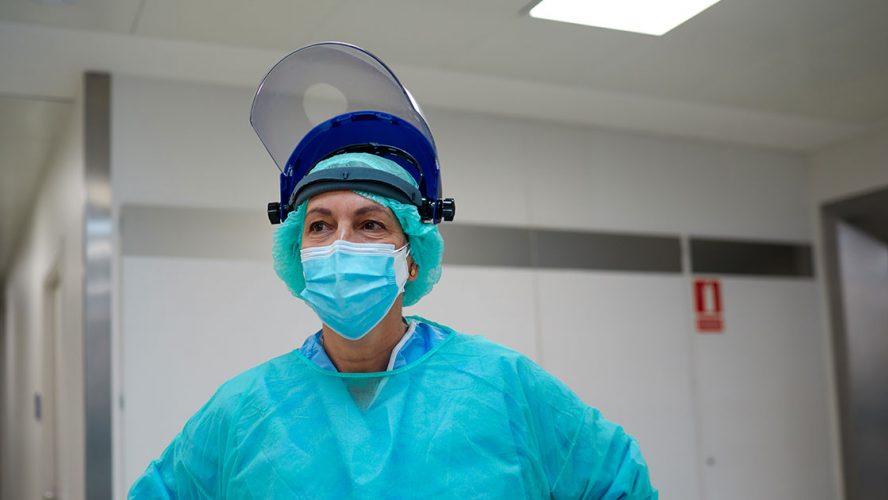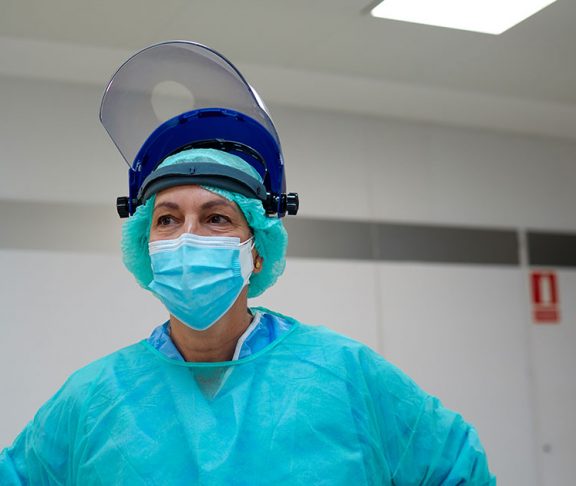
Donna Bednarski, MSN, RN, ANP-BC, CNN, CNP
Former President, American Nephrology Nurses Association
Shortly after COVID-19 emerged, nephrology nurses like me recognized the magnitude and impact of the disease were far greater than anticipated.
For patients with CKD on dialysis, we saw high infection and mortality rates, with some studies indicating up to a 28 percent chance the patient would die. In hospital ICUs, we witnessed a high incidence of acute kidney injury (AKI) among patients with COVID-19. Many who had never experienced kidney disease needed kidney replacement therapy or dialysis. Because of the heightened demand on ICUs, nephrology nurses had to ensure that patients with existing kidney disease who needed dialysis still had access.
Chronic kidney disease (CKD) affects an estimated 37 million people in the United States and an additional 1 in 3 Americans (approximately 80 million) are at risk, according to the National Kidney Foundation.
The pandemic was a wakeup call for the healthcare industry and the nephrology specialty. It exposed many weaknesses, such as shortages of dialysis machines and qualified staff, including nephrology nurses.
A broad field
Because nephrology nurses work with patients of all ages to prevent and manage kidney disease, our roles are critical and far-reaching. Nurses in our specialty are highly skilled and educated — we often work in team-oriented environments in a wide range of settings, including chronic kidney disease clinics, kidney transplant centers, acute/hospital settings, and dialysis units (in-center and home).
For COVID-19 and transmissible infections, in-center dialysis patients have particular challenges because they are exposed to other patients and staff three times a week with limited ability to social distance. Many patients rely on public transportation to get to their life-saving treatments, resulting in further exposure with limited ability to minimize exposure.
During the early stages of the pandemic, nephrology nurses stepped up quickly to address patient safety, manage the increase in infectious patients, and address staff concerns due to their high degree of direct patient contact. We worked with patients to address the lack of access to information, educating them on infection prevention, including proper use of masks and processes to quarantine at home. To help address staffing shortages, the American Nephrology Nurses Association (ANNA) launched a “COVID-19 Nephrology Nurse Surge Support” tool that connected nurses with facilities in dire need of qualified nephrology nurses.
Innovations for the future
Nephrology nurses have performed heroic acts during the pandemic and came up with extraordinary solutions to meet the crisis. Some sustainable innovations include:
- Infection prevention
- Screening protocols for early identification of patients at risk and those with possible infection.
- Setting up mechanisms to distribute and ensure adequate personal protective equipment.
- Isolation protocols that cohort infected patients on an alternate shift, day, or even a different unit.
- Dialysis delivery
- Hospitals: Due to the large number of patients on hemodialysis with COVID-19 and the increased incidents of AKI, numerous patients were started on peritoneal dialysis (PD). However, a shortage of skilled staff to maintain PD followed, so staff were cross-trained to ensure dialytic needs were met.
- In-center units: in addition to grouping infected patients, there was an increase in the number of patients receiving home hemodialysis and peritoneal dialysis therapies.
- Telehealth
- Facilitates follow-up visits and prevents delays in care.
- Along with patient education on technology, issues with poor connectivity need to be addressed.
- Access to information
- Provide ongoing patient education regarding timely care.
- Address ongoing fears about coming to healthcare facilities for care.
Home dialysis is the future and COVID-19 was a catalyst for change. Staying at home decreases exposure with lowered disruption in care. We are now investigating avenues to increase success of patients dialyzing at home, including home-assisted dialysis.
We have learned a great deal during this pandemic. I am proud to be among the many courageous and dedicated healthcare professionals who stepped up to the challenge. At the same time, we realize our work has just begun.

